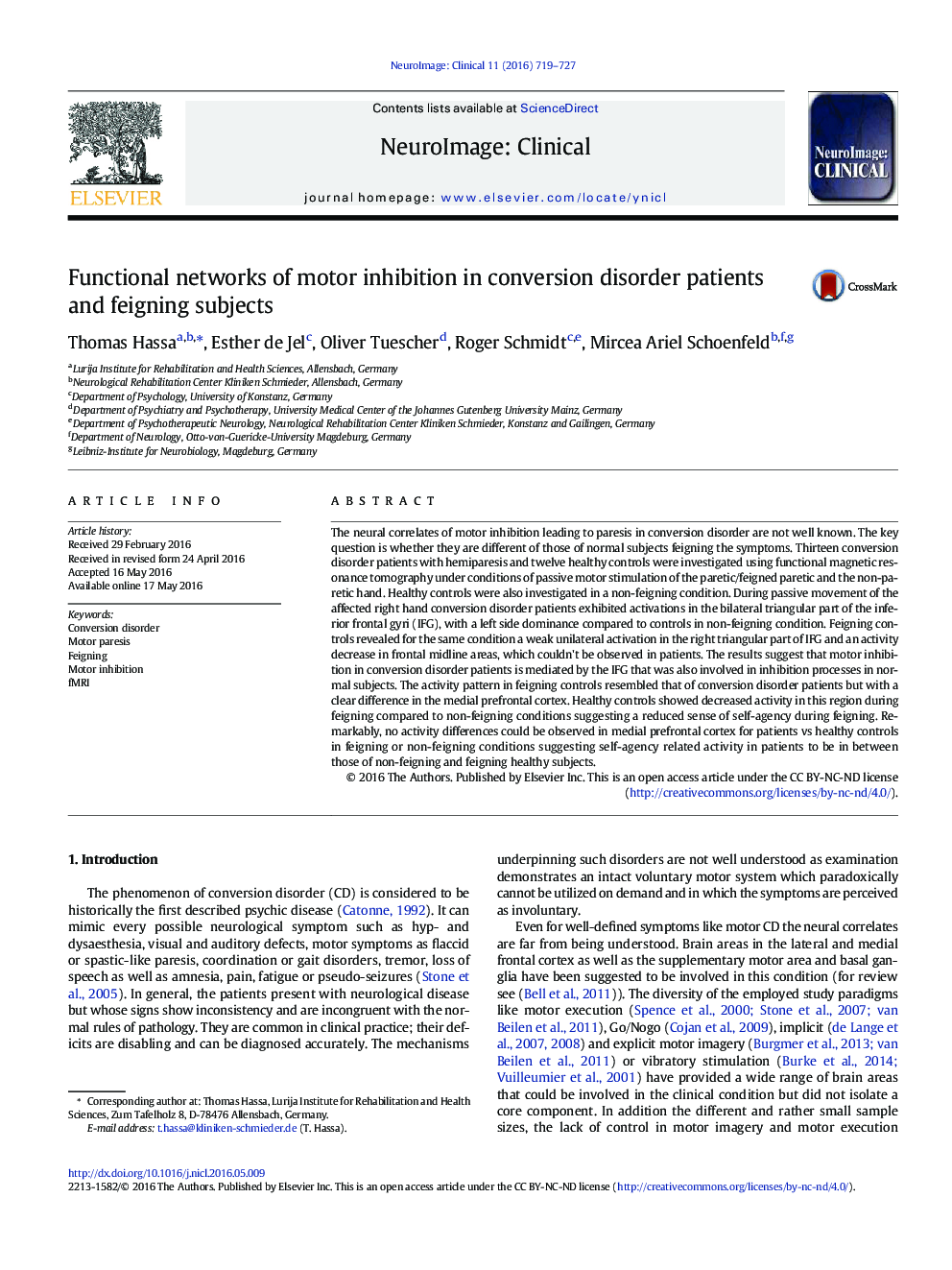| کد مقاله | کد نشریه | سال انتشار | مقاله انگلیسی | نسخه تمام متن |
|---|---|---|---|---|
| 3074962 | 1580956 | 2016 | 9 صفحه PDF | دانلود رایگان |
• Motor inhibition was investigated in motor conversion disorder patients and feigners.
• Neural correlates were found in nearby but different lateral inferior frontal regions.
• Altered sense of agency in patients was reflected in medial prefrontal activity level.
The neural correlates of motor inhibition leading to paresis in conversion disorder are not well known. The key question is whether they are different of those of normal subjects feigning the symptoms. Thirteen conversion disorder patients with hemiparesis and twelve healthy controls were investigated using functional magnetic resonance tomography under conditions of passive motor stimulation of the paretic/feigned paretic and the non-paretic hand. Healthy controls were also investigated in a non-feigning condition. During passive movement of the affected right hand conversion disorder patients exhibited activations in the bilateral triangular part of the inferior frontal gyri (IFG), with a left side dominance compared to controls in non-feigning condition. Feigning controls revealed for the same condition a weak unilateral activation in the right triangular part of IFG and an activity decrease in frontal midline areas, which couldn't be observed in patients. The results suggest that motor inhibition in conversion disorder patients is mediated by the IFG that was also involved in inhibition processes in normal subjects. The activity pattern in feigning controls resembled that of conversion disorder patients but with a clear difference in the medial prefrontal cortex. Healthy controls showed decreased activity in this region during feigning compared to non-feigning conditions suggesting a reduced sense of self-agency during feigning. Remarkably, no activity differences could be observed in medial prefrontal cortex for patients vs healthy controls in feigning or non-feigning conditions suggesting self-agency related activity in patients to be in between those of non-feigning and feigning healthy subjects.
Journal: NeuroImage: Clinical - Volume 11, 2016, Pages 719–727
